
Rights Reserved - Free Access.
This digital object is protected by copyright and/or related rights. This digital object is accessible without charge, but its use is subject to written permission.
Unless expressly stated otherwise in the licensing conditions, you are free to make any of the acts permitted by your national copyright and related rights act, including browsing, printing and making a copy for your own personal purposes.
All other acts of reproduction and communication to the public are subject to the licensing conditions attached to the digital object.
ARMY BOOTS OF THE WORLD. REVIEWS
Important notice: we do not sell any boots! The prices are given for information purposes only!
France ![]()
French Military boots BMJA Mle 52 - "Rangers marrons"

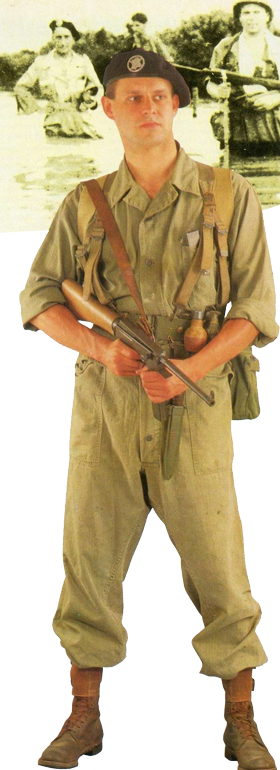
Since 1950-s the French army boots are used to be called the "Rangers", because of their resemblance with the American military boots model M-43 (model of the year 1943), which were issued the US paratroopers and rangers during the landing in Normandy. In French slang, "Rangers" also called "Rangeots" or simply "Rangos" (the pronunciation of these words are close to something like "Ranjo").
The American military boots model 1943, which has became the prototypes of the French "Rangers", are already very rare nowadays, and in their outward appearance they look very similar. The main differences of the American boots from the French ones:
- The out-soles are relatively smooth, with not protruding "mesh-like" tread pattern and American manufacturers labels (sewn along the welt of the sole and padded with boot nails in the instep area);
- Leather upper is softer and made more carefully(such boots rub the feet less and are easier to "break in");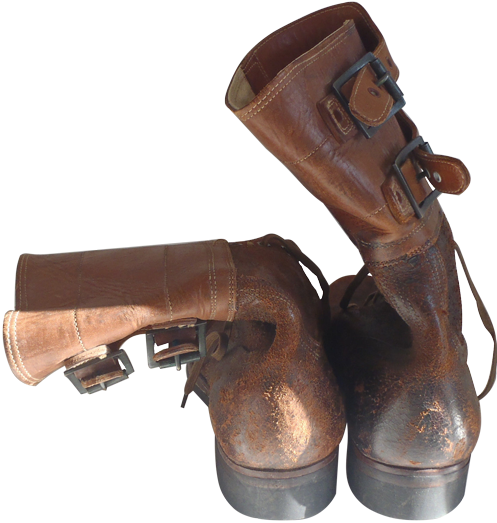
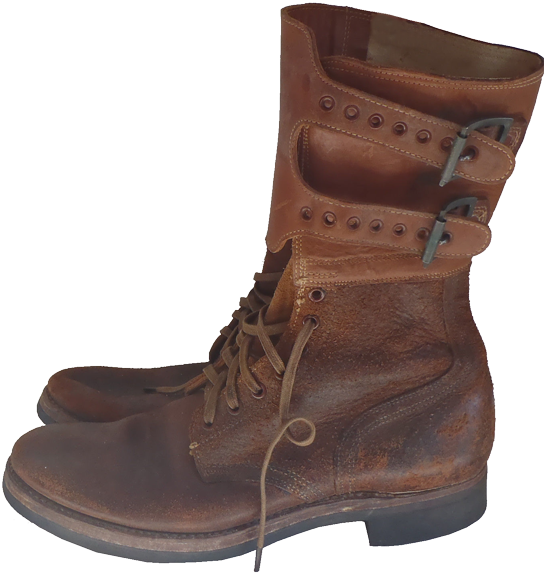

- Smooth (most often) leather of the cuff with two buckles on top of the boots, while the French ones feature equally rough-out leather on the entire surface of the boot;
- The number of eyelets for the prongs of the cuff buckles supersedes those of the French scheme "5 + 4" (5 eyelets on the upper leather strap and 4 on the lower strap).
The soles of the boots presented at the photos below have the following indication of the manufacturers labeled:
- Goodyear (Wingfoot) / New Jersey Rubber Co.

- Endicott-Johnson (logo "EJ") - the company has managed to achieve the maximum output of production during the Korean and, especially, the Vietnam War:

It were the American military boots model M-43 which can be seen on the staged photos of Marlene Dietrich made during her concert tour for the US troops in Europe during World War II. The famous actress was dressed in the US military boots and uniform to show her support of the American troops.
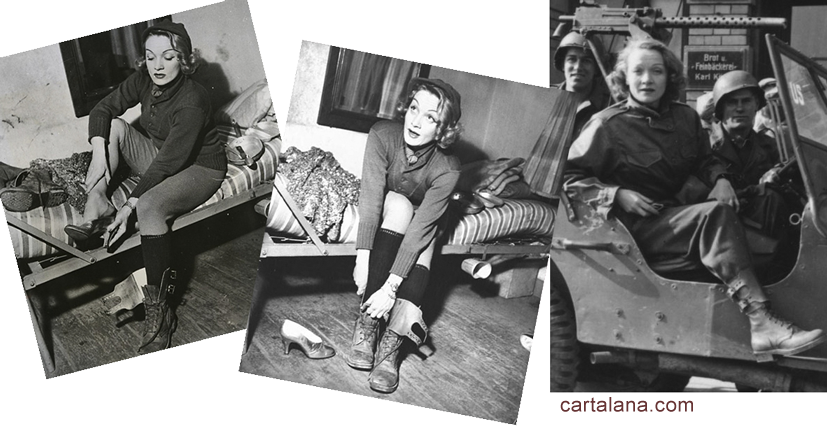
The "borrowing" of the American ideas by the French was mainly connected with post-war unification of military standards for footwear, apparel and equipment by the Western allies. In France, the beginning of this process was initiated in 1944, during the creation of the new post-war French Armed Forces. At the same period the French had been using widely vast variety of British and American military stuff. Further on, the French managed to established their own production of similar equipment.
The term "Ranger" itself nowadays is strongly associated with BMJA 65 boots,
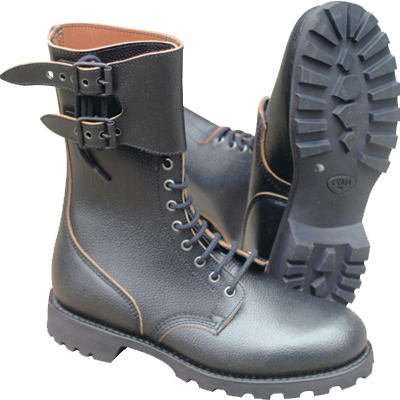
but originally they were referred to the boots model 1952 (Brodequin de Marche à Jambière Attenante (BMJA) Mle 52), also known as "Rangers marrons" ("Brown Rangers"), which en masse began available in the French Armed Forces since 1956.
Since "Free France" and its "Free French Forces" (French: "La France Libre" et "Forces françaises libres (FFL)") were supported supplied by the Anglo-American allies, for example, the French paratroopers widely used the US M43 boots (model 1943), the American and British influence can be clearly traced in many French post-war models of uniforms and equipment.
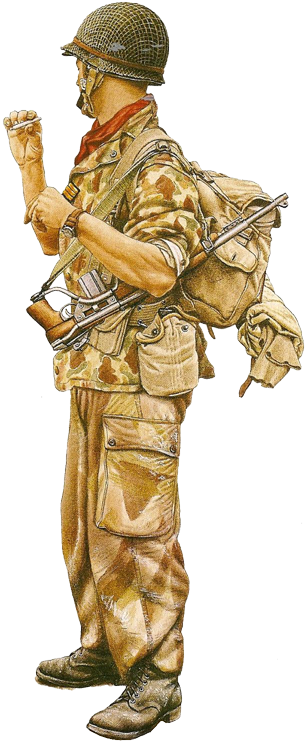
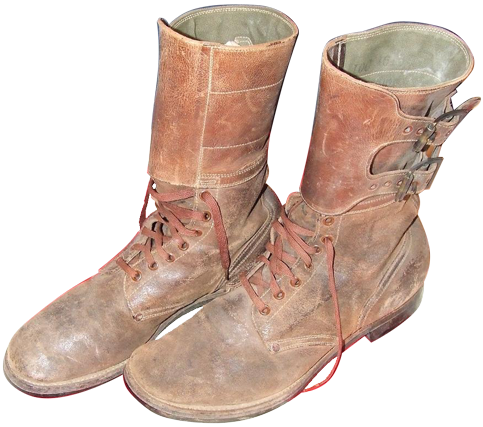
At first the French just used the American-made M43 boots, and then they began to produce the own copies of these boots
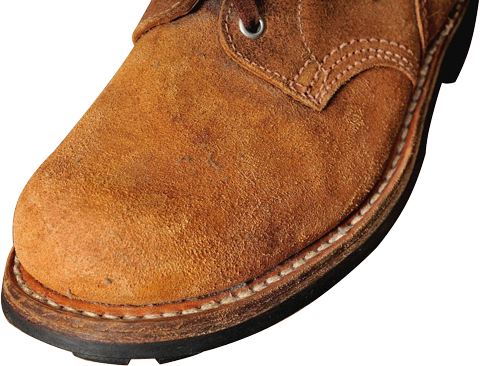
Further on, the French version of American M43 military boots was adopted in the year 1952, having embodied the ideas and innovations developed by the French, especially concerning the materials and the method of out-sole attachment, new advanced sole tread patterns, details and material of the boot top. Only the general concept and design of leather cuff with two straps and buckles, along with color shades (from beige to brown) were retained from the American prototype.
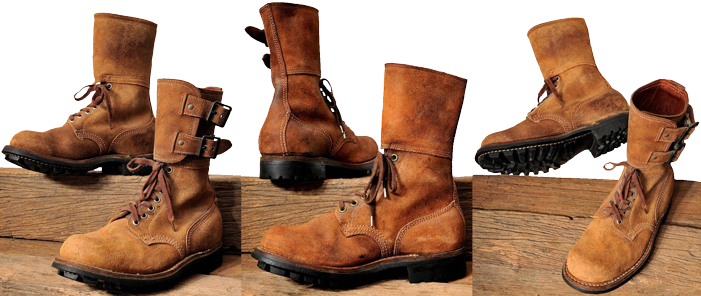
Before the introduction of high-laced boots of the models 1950 and 1952 in the French Armed Forces, during the colonial wars the French troops widely used the low boots of the previous models.
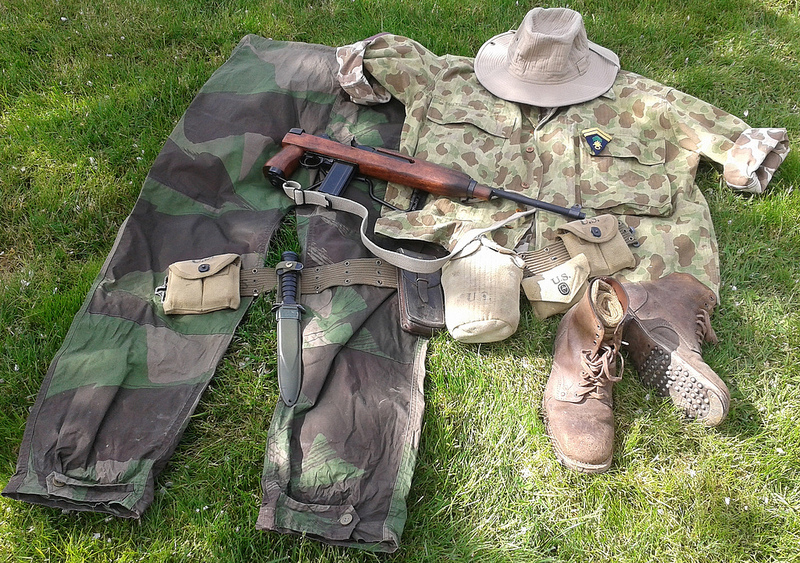
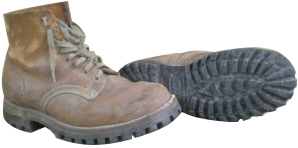
Low army boots used to be worn with canvas gaiters of several types:
- British P37 (Pattern 1937 gaiters)

- American M36 and M38 (gaiters model 1936 and 1938)

- Or French, gaiters model 1945, i.e. the so-called "guêtrons Mle45",
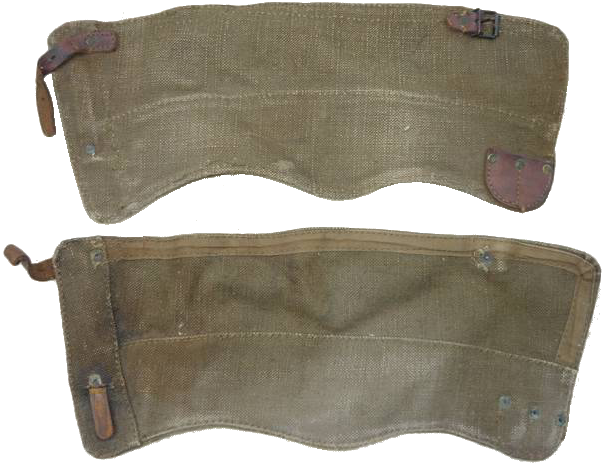
which were modeled on the Anglo-American models and the ones, which had been used in the German Wehrmacht
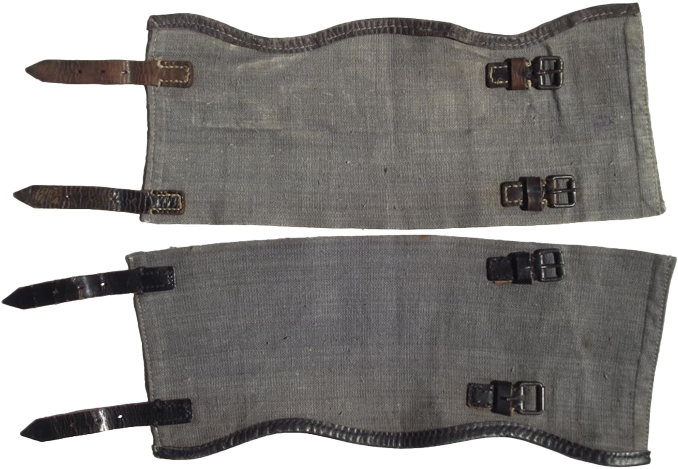
Along with the Mle45 gaiters, during the wars in Indochina and Algeria, the French troops used Mle51 gaiters (model of the year 1951),which were adopted for the Armed Forces of the French Republic, including the Foreign Legion:
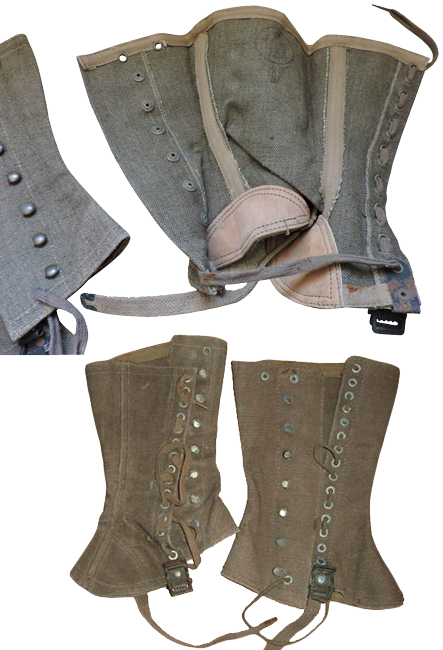
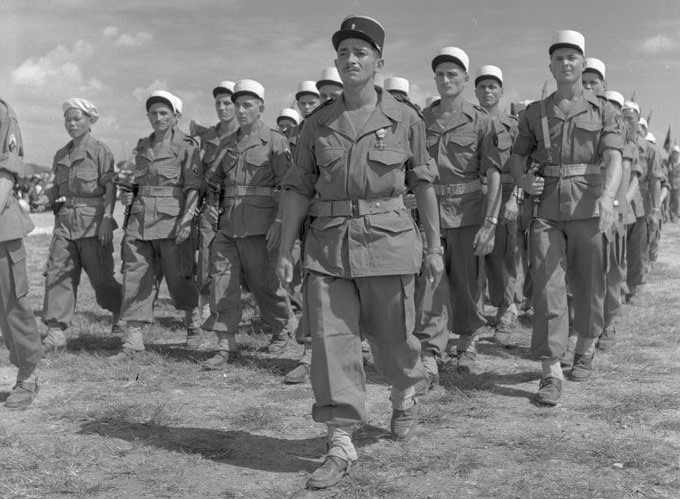
The widespread use of gaiters is a clear evidence, that the military warehouses had plenty of low boots of different models and years. Also these boots were highly repairable and easy to re-sole: there are a large number of photographs of French soldiers wearing the boots of early years, for example, Mle17 or Mle41, resoled with the new highly grooved rubber out-soles.
During the armed conflicts in the hot tropical climate areas (from Indochina to North Africa) the French soldiers used to wear "Pataugas"-type boots made of lightweight canvas and hard vulcanized rubber out-soles, both high and low, with different tread patterns and produced by different manufacturers.
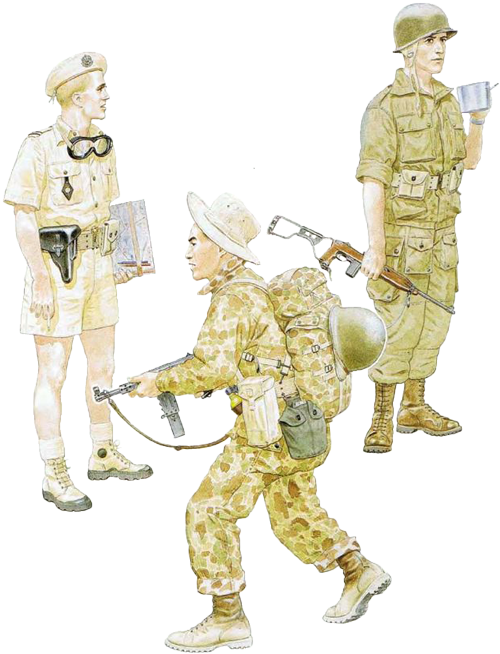
BMJA Mle 52 boot represent by itself the result of the French army boot development and the influence of the US military boots. Mle 52 differ from the previous models (of the years 1917, 1941 and 1945) by individually sewn-on leather cuff with buckles.
After the Second World War the French Armed Forces had in use several types of models.
The first model of Brodequin de Marche à Jambières Attenante (BMJA) Mle 52 was a strong, hard brown leather boot with the height up to the ankle (23 cm, if not to count the height of the heel), with tight leather cuff featuring one buckle (boots of the very first type) or with two buckles (boots of the second type) sewn to the top.

As it was noticed before, in the French Armed Forces, this model got the name "Brodequin de Marche a Jambieres Attenantes (BMJA) Mle 1952". After the adoption in 1952, the mass production of these boots began in 1954, and they became widespread approximately in the year 1956. The special priority in providing these new advanced high boots was given mostly to the paratroops, participating in the hostilities in Algeria.
On the Internet, even on the French web-sources, one can find mistaking mentions and even the "pictures" of military boots model 1947, the so-called "BMJA Mle 47 (Brodequins de Marches a Jambières Attenantes modèle 1947)". However, one can not provide the proof of any official documents or mention boots of this model.
Actually it were the (BMJA) Mle 1952 boots on all the pictures, which were intended to show those "mythical" and mysterious "model 1947" boots.
Sometimes "Mle 47 boots" are confused with early Mle 52 boots, which differ from the later version by "Y"-shaped strap with a single buckle on a leather cuff ("guètron").

The authors of this "myth" might also be misled by the designation of the uniforms, introduced exactly in the year 1947 - the so-called TAP47. The prefix "TAP" stands for "Troupes AeroPortèes", i.e. the "Airborne Troops"). In French military slang this prefix is also often used with the acronym "Mle", which, in turn, is an abbreviation of the word "Modèle" ("Model"), followed by the model number, or, more often, the year of adoption (e.g., TAP Mle 1947/51 stands for the "uniform for paratroopers model 1947 with the modifications adopted in 1951).
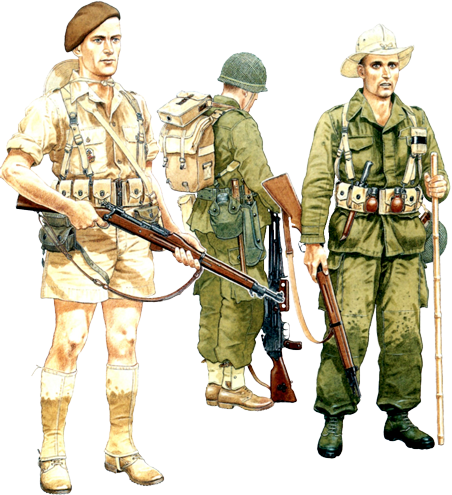

Often the uniform's prefix to denote "TAP" is omitted, leaving only the name of the model and the year of introduction, for example Mle 1947/51. Accordingly, it may come across different variations of the same name, such as "M1947 / 54", "TAP Mle 47/54", etc.
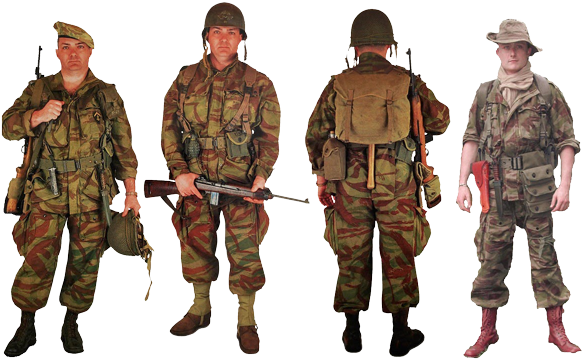
The single-buckle boots were manufactured in 1954 only, today they are extremely rare, and although they are always "forgotten" or just not mentioned, these French boots are known to the researchers and mentioned in the case studies. For example, single-buckle Mle52 boots are described in the "Histoire & Collections" series book "Les Paras Francais en Indochine" written by Eric Adam and Patrice Pivetta.

It is exactly known that these boots were supplied to the military units stationed on the territory of the metropolitan country, i.e. in France. Prior to the supply of these new model boots to the armed forces, the French military command surely decided to spend the old stocks of low boots of the previous obsolete models, as well as the rest of the original American M43 model boots and, to a lesser extent, jump boots model Mle 50, for the units involved in Indochina conflict...
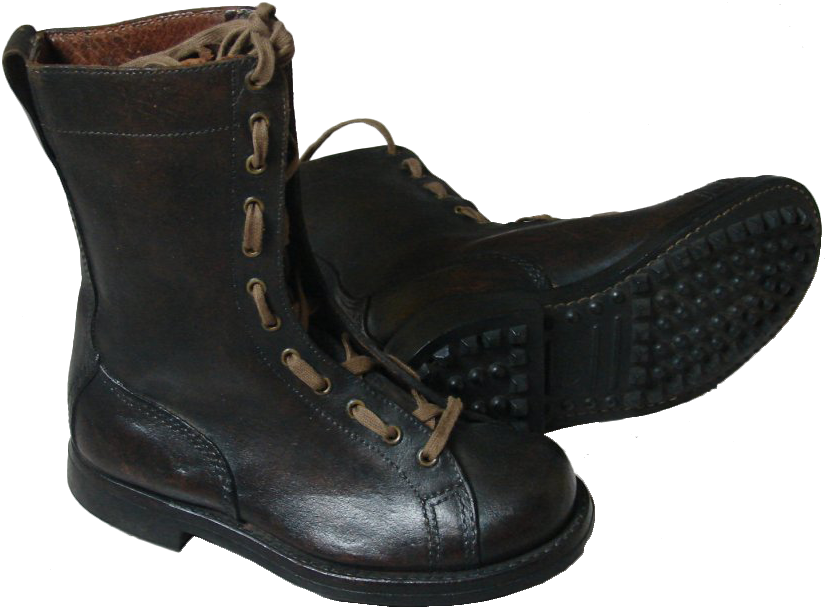
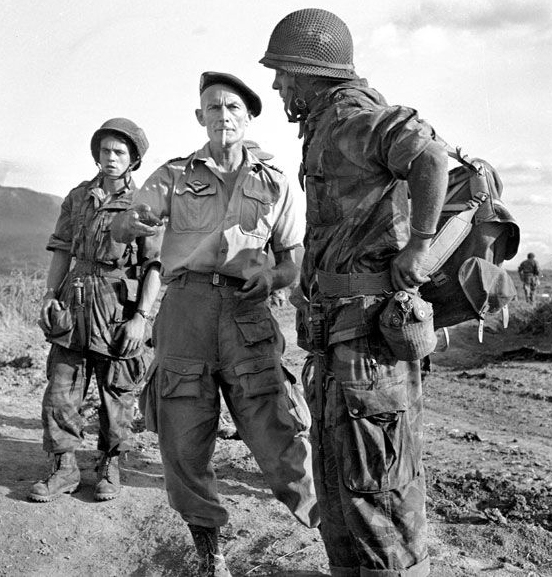

As for the early "Y-shaped" single-buckle strap boots, there is some contradictory information. Among the researchers of the French military uniforms of the period, it was widely believed that these boots were made also for the Vietnamese Armed Forces, controlled by the French command, and these were the specific boots for Indochinese allies. In other words, some of the BMJA Mle 52 boots of the first models were delivered to the Vietnamese allies of France, i.e. to the Armed Forces of the State of Vietnam, proclaimed in March 1949, and these boots have been used by the Vietnamese up to the end of the 1950s. According to this theory, further on the Vietnamese allegedly began to make the copies of these boots for their own Armed Forces.
On the other hand, the really compelling evidences of that has not been found yet, and this idea is disclaimed by the researchers of the Vietnamese military uniforms. There have not been presented the public concerned any samples of these "Vietnamese" boots. There are also plenty of such boots in the private collections of French veterans of the colonial wars, and many of these boots are really large (French sizes 45, 46 and even 47), quite peculiar for Europeans and generally not suitable to the Vietnamese.
In the French units in Indochina themselves, the boots model Mle. 52 have not been wide spread, because the standardization of the final model was going on at that time. On May 7, 1954 a the peace conference for all the parties involved in the Indochina conflict (1946-1954) was held in Geneva to discuss the conditions of ending the military conflict. On the same day the French military base in Dien Bien Phu surrendered.
Since January 1954 the French Armed Forces refused from using the boots for paratroopers Mle 50 (botte de saut modele 1950) due to the critical user feedbacks, as well as the relatively high cost of production of this model. Finally, it was confirmed by the decision of the Committee of Defense of France, of May 31, 1955.

Around the same time began the transition of the armed forces of France to a new universal model of high boots - BMJA Mle 52 (Brodequins de Marches a Jambières Attenantes modèle 1952).
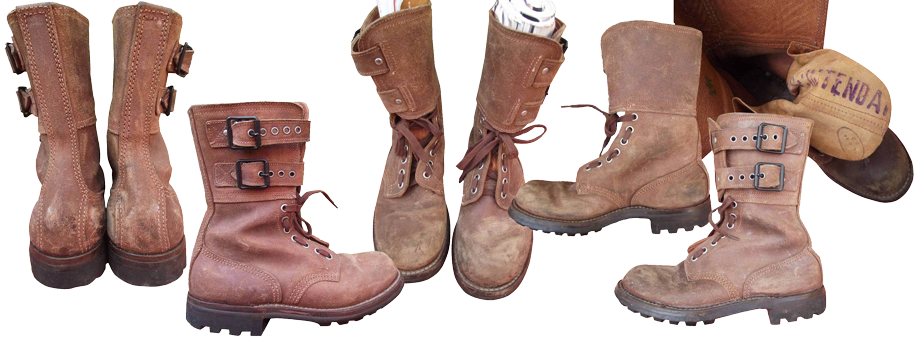
The ongoing armed conflict in Indochina allowed to test the first prototypes of a new boot in actual combat conditions, which revealed both the advantages and disadvantages of BMJA Mle 52, the feedbecks were collected by interviewing the soldiers, who used such boots. After the "field tests" these new boots were provided (more or less "en masse" around 1955) primarily to the elite paratrooper units.

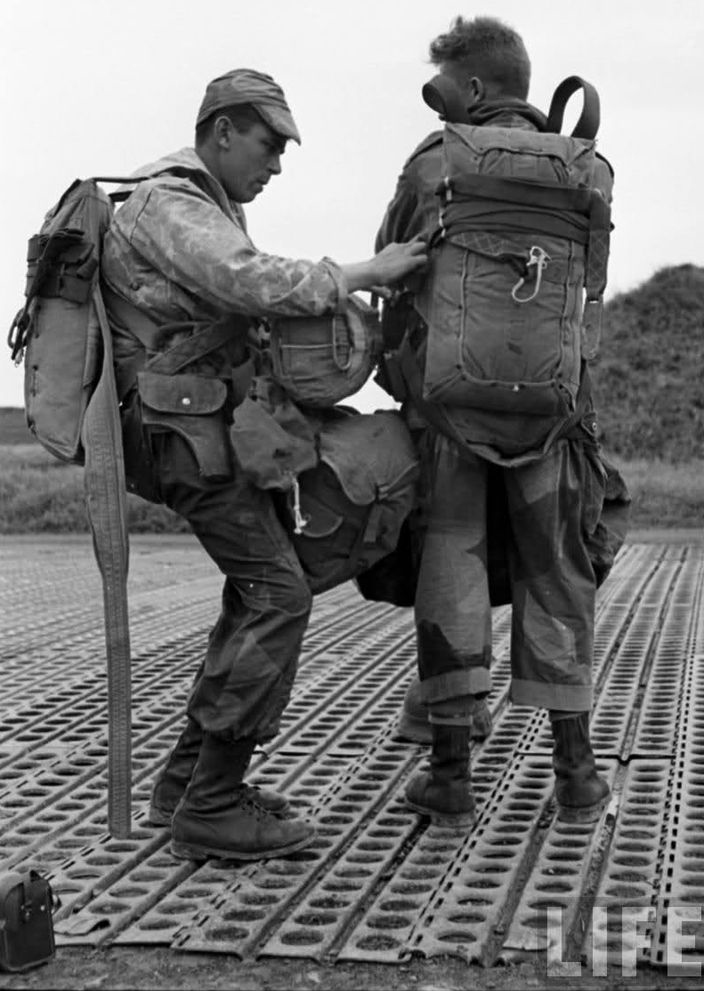
Like most of the contemporary French army boots, the inner side of the boots were lined with thin, soft and durable genuine leather (usually sheep leather) of light beige shades, with minor color differences depending on manufacturers.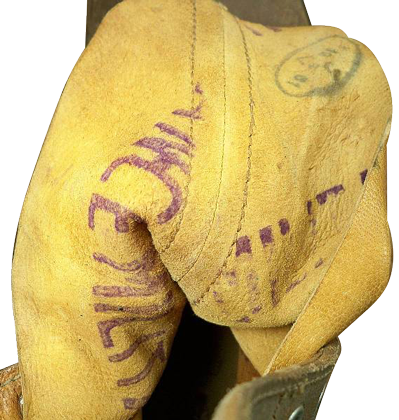

The boots of the model 1952 featured thick cowhide leather mid-sole with stitched and glued out-sole (also model 1952) made of solid vulcanized rubber, with deep tread of multiple patterns.
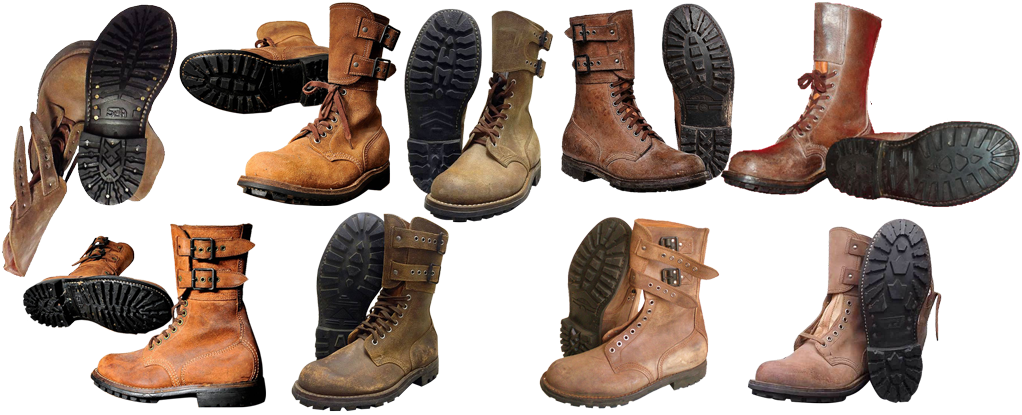
There are really vast variety of French tread patterns. The overall construction of the boots used to be reinforced with boot nails or screws, made of copper or brass.
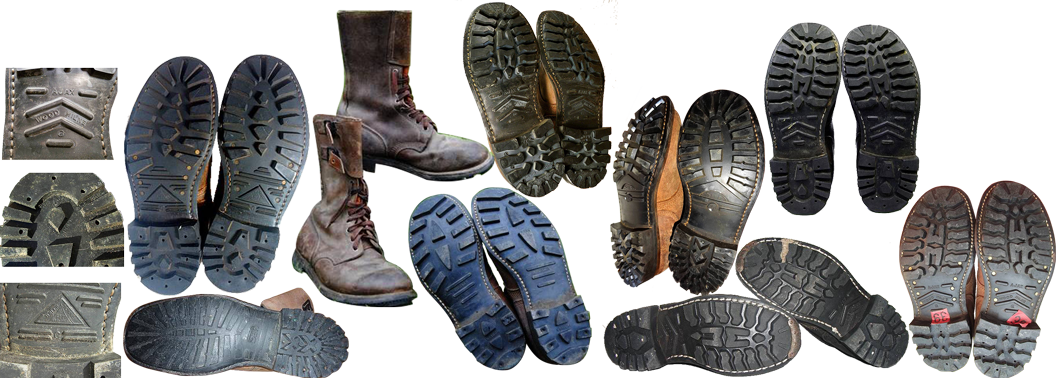
The out-look appearance of the boots, namely the toe, the counter (the heel) and the tongue of the boot copied the similar elements of the jump boots Mle 50. The tongue of the boot was comprised of two longitudinal portions, and, in order to increase the strength and tightness of the overall construction, the outer surface of the tongue's central seam was covered with a strip of thin sheep leather over its entire length. This additional leather layer also served as a kind of an additional damper between the foot and the lacing. The structural elements in the upper part of the boots were triple-stitched by nylon threads. As it was told before, the first serial batches of these boots started to be supplied to the French Armed Forced in the year 1954.

The next and last modification of BMJA Mle 52 construction had happened in 1961. The essence of the novelty consisted in transformation of the cuff: since that it was not sewn separately to the top of the boot, but became an integral part of the boot's top. The total height of boots decreased slightly. This modification in 1961 was named BMJA Mle 52/61, or simply "La modification 61".

The design of the boot's counter (the heel cap) was simplified, and the thin sheep leather was no more used on the inner surface of the boots. In general, this modification resulted in mass production cost decreasing, and the number of leather pieces and stitches also was reduced, that resulted in reducing of the number of operations required. In turn, water resistance and overall robustness of the boot's design were increased. Perhaps the earliest models used to be more comfortable to wear, and, accordingly, more expensive.
From 1954 to 1955, first type BMJA Mle 52 military boots were issued, in particular, to the soldiers of 2 RPC (regiment de parachutistes coloniaux) - 2nd Parachute Regiment of colonial troops of the French Republic, but it was already after their active participation in the Indochina conflict (1947-1953).
Since 1958, this regiment got the new name: 2nd Marine Infantry Parachute Regiment (2e Règiment de parachutistes d'infanterie de marine). A curious fact: in France the Marines are a part of the Ground troops, not the Navy!
As it was mentioned earlier, the early model of the French military boot BMJA Mle 52 featured "Y"-shaped leather strap on the cuff ("guètron"), fastened with a single buckle. In 1956, the clasp was modified for better grip on the legs, and more reliable ankle support, so the "Y"-shaped form of the leather straps was replaced by two parallel straps, which are more usual today. Sometimes an unusual ways of straps fixation to the cuff were used, for example, not with stainless steel rivets, but with ordinary stitching.
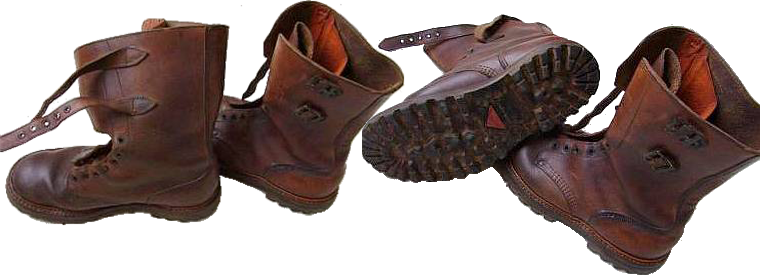
The pictures below show the "Rangers" model with sewn buckles produced by "Manufrance (Manufacture française d'armes et cycles de Saint-Étienne)" for the civil market (with red triangle logo on the sole, while the military models featured black logo).
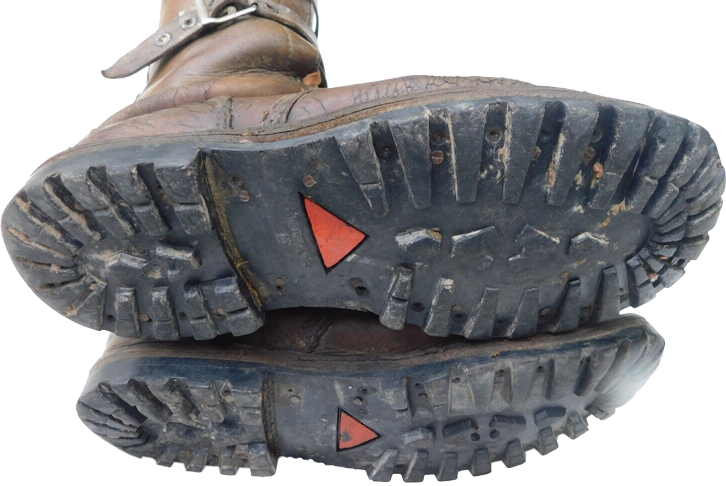

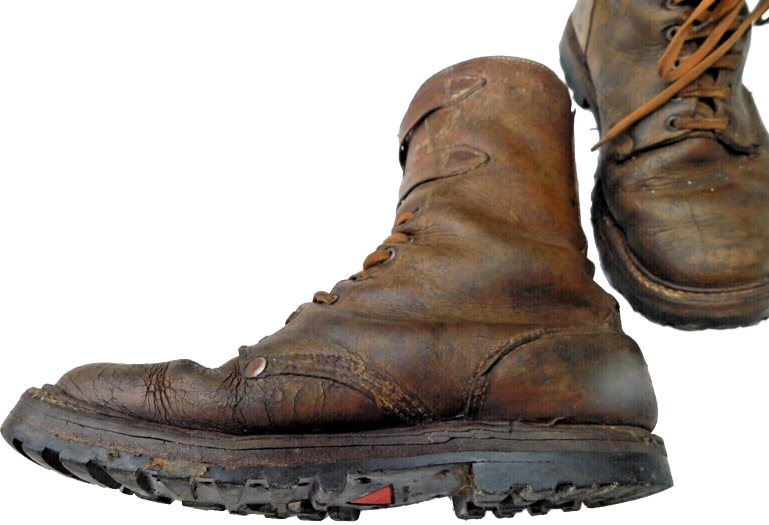
The buckles on the leather cuff of the BMJA Mle 52 were also modified with time - the early models are sewn and fixed with pop rivets, or just sewn to the cuff. The late model the boots top was made from a single piece of leather, which increased the robustness of the boots overall design. These boots were usually brown-colored. The ID marking (round stamp) indicated the date (quarter and year of manufacture, manufacturer's name and the city, where the definite footwear producing factory was located, along with the size and widths in the French metric) was put on the inside the boot, at the top, by hot stamping method or, less frequently, with paint.
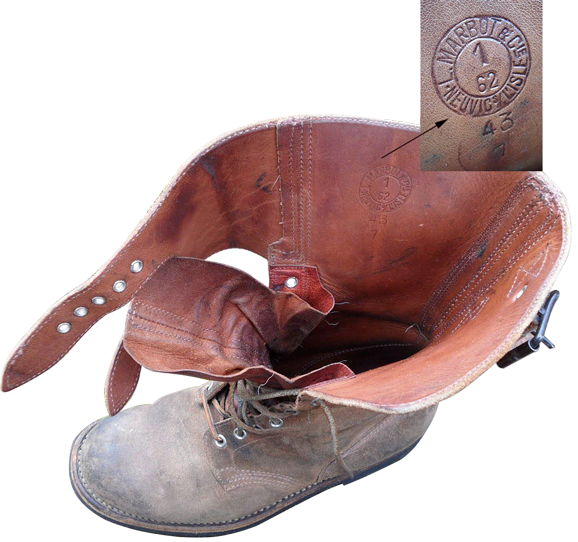
French BMJA Mle 52 military boots were used during the following wars:
- During the last two years of the war in Indochina (which lasted from 1946 to 1954), in very limited quantities;
- In Morocco and Tunisia (from 1954 to 1956.);
- During the Suez crisis (from October 1956 to March 1956.);
- In the last year of the war in Algeria (1954 - 1962).
From the very beginning, all the boots model Mle. 52 were delivered from the boot factories unpainted, and their color was natural rough tan leather, protected with a thin layer of beeswax, a good natural preservative.

This treatment provided good protection against moisture, rain and dust. According to the regulations they were supposed to be treated with the colorless fat or cream for boots, e.g. "Neatsfoot" oil. In some regiments (for example, in 3e RPC), ahead of time, the soldiers were ordered to paint their boots in black, and the trend was spread by the end of the Algerian war, but on the other hand, many units did not follow this "fashion".
In the last decade the military surplus stores offer these rare French boots of the 1950-60s, sometimes even in almost excellent state. Such boots have been stored in warehouses, with a layer of wax and paper labels with size indication on the back sides of the heels. The availability of such boots in recent years can be explained by massive "writing off" these boots from the military warehouses and the subsequent sell-offs, so the prices can be surprisingly low.
Sometimes the buyers of these boots complain on the forums, that the soles of BMJA 52 boots often break or crumble. This may be due to the violation of these boots storage conditions and the impact of time. In almost all cases, sellers do not give any warranty on these "written-off" boots, indicating that the boots were kept for many decades, so it is impossible to predict the materials degradation of each definite pair of boots.
However, the market offers plenty of well-preserved BMJA Mle 52 boots, which appear to be almost not affected by time. After buying these boots, the new customer should use soft brush to remove carefully the layer of wax from leather upper and top treat the boots leather with boot's fat several times to get a pair of these really interesting boots!
French military desert boots (hot climate boots) (Brodequins Zone Chaude Armée Française)
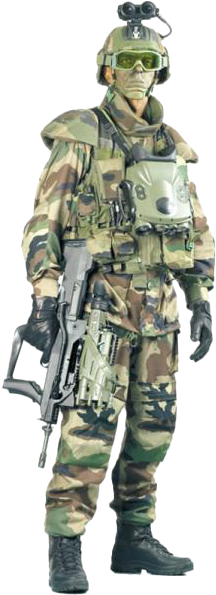

A new model of desert boots was adopted to equip the French Armed Forces in the early 2000s. It has become a part the French infantryman's combat system FÉLIN (Fantassin à Équipement et Liaisons Intégrées) - Integrated Infantryman Equipment and Communications), aka "le treillis Félin", the French analogue of American "Future Force Warrior" and British "Future Integrated Soldier Technology (FIST)".
After winning the tender of March 2004, the French company "Sagem Défense Sécurité" - a part of TNS (Thales, Nexter Systems, Sagem (groupe Safran)) were designated to carry out the Felin1 program, along with 25 subcontractor companies.
These French boots for arid and hot climate are primarily intended for use in harsh desert conditions of the North African region. The boot's top is made of thick cowhide suede and nylon ("Cordura"+1100) inserts, all brown-colored, and provide both ventilation and resistance to physical and mechanical stress.
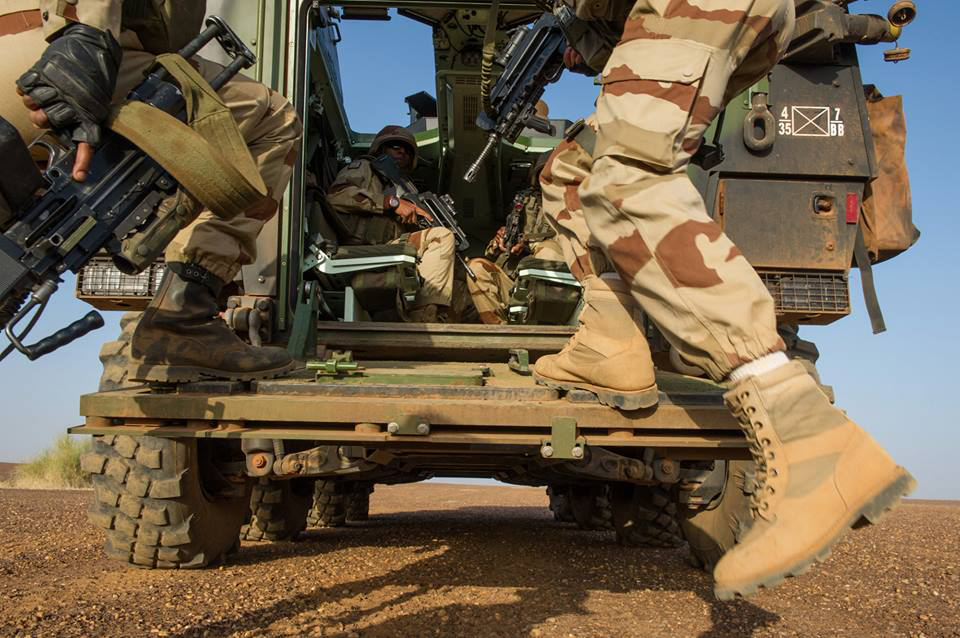
The upper part of the boot features soft leather cuffs of more light-colored leather intended to grip the legs tightly and to prevent the ingress of extraneous dust and small objects.
The lining inside the boot is made of mesh breathable "Cambrelle" material (capable of absorbing moisture 5 times more than its own weight), which, being combined with "Cordura" inserts provide good heat balance and sweat disposal, as well as favorable micro climate even under extreme temperature differences inherent to the deserts. The lacing system consists of eight pairs of simple round eyelets. The sole is made of black vulcanized dense rubber of medium hardness.
The soles of these boots are fixed to the top by classical gluing and stitching method (the so-called "Goodyear Welt Construction"). The tread pattern of the sole is simple, and is formed of big angular protrusions of different configurations. This pattern allows to provide good grip on different surfaces and stable position of the feet when walking.
Among the manufacturers of these boots one should mention such well-known manufacturers of "Rangers" BMJA-65 black boots as "Marbot" and "Argueyrolles".
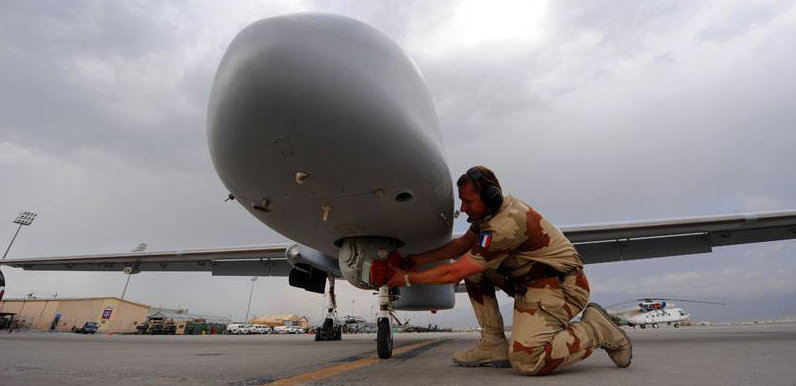
Most often these boots are used by French Air Force ground services personnel in Africa (Chad, Mali, Cote d'Ivoire, Niger) and in Afghanistan, in particular by the technical staff of military bases.
We can say that these desert boots ("Brodequins Zone Chaude") is something average between light canvas-and-rubber "Pataugas" and strong-and-stiff leather "Rangers". The French, being addicted to their traditional almost Juche-like "self-reliance", did not borrow the ideas of fairly successful American desert boots model, which became the further development of the "jungle boots" concept. The French had their early ideas and achievements, whose influence can be traced in the design of the modern French desert boots.
This can be proved by consideration of the design of French "Morvan"-made boots which date back to the Indochina war.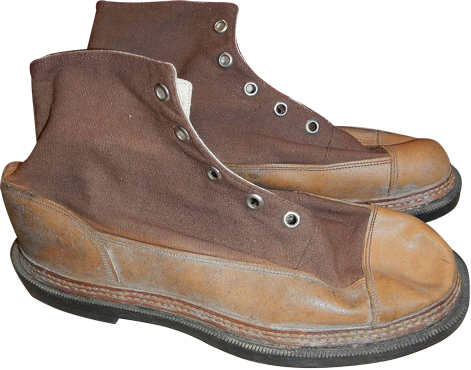
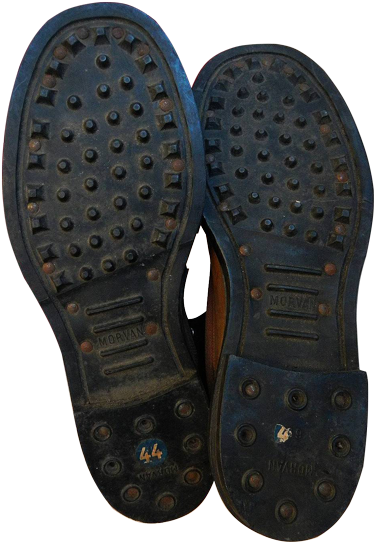
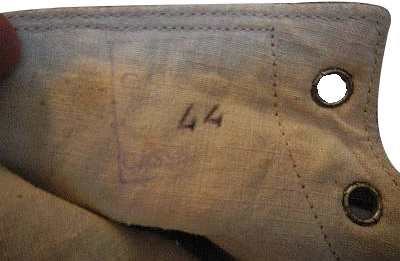
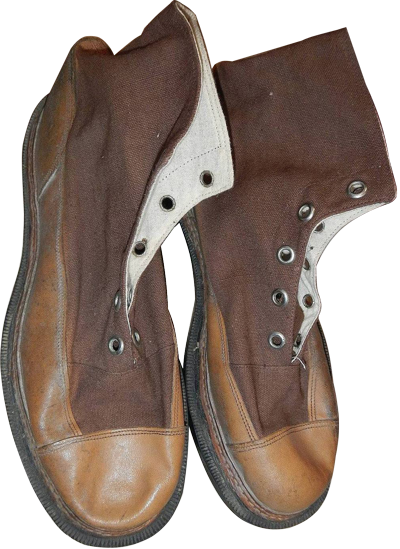
These boots are made definitely for hot climate, mainly arid, but, to some extent, too, they may go well in hot and wet climate as well. The top of the boot is made of leather (the lower part near the sole) and canvas: all are brown-colored. The top is attached to the leather mid-sole by robust double stitching and glue, the leather sole is attached to the solid vulcanized rubber tread by glue and twenty-boot nails (5 on each heel and 15 - along the welt of the sole), the overall impression of the construction is that it's very reliable and strong.
The lacing system is provided by five pairs of simple round eyelets, made of stainless steel. The tongue is not sewn to the top of the boot by side stitches. On the one hand it provides better ventilation, but on the other hand it allows penetration of moisture and small pebbles inside the boots. The marking of the boots is almost the same as in the contemporary "Pataugas".
The tread pattern of the sole is "semicircular studding" imitating padding with nails, as it was in older models of French low military boots. The soles and heels bear the name of the manufacturer - "Morvan", and size in the European (French) metric.
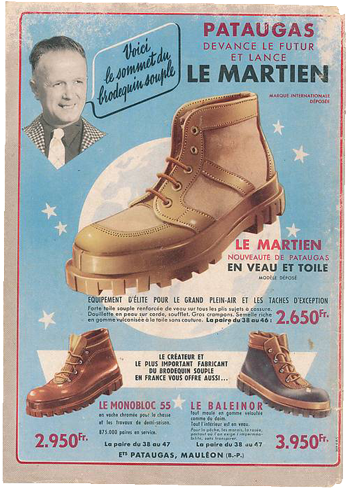
In addition, the analogs of contemporary French desert boots design can be traced in the commercial footwear of the 1950s. In the right figure one can see the advertising of the year 1955 catalog of the French company "Pataugas". The picture shows the obvious similarity between the modern French desert boots and the models, referred to as "Le Matrien Nouveauté de Pataugas" ...
The photographs of the "Brodequins Zone Chaude" boots can be seen on the French soldiers from the armed forces and the Foreign Legion, but quite often they wear the boots from other manufacturers. In particular, the French soldiers can be often seen in "Lowa Elite Desert", the German-made desert boots.
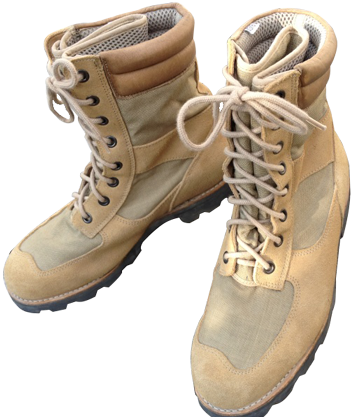
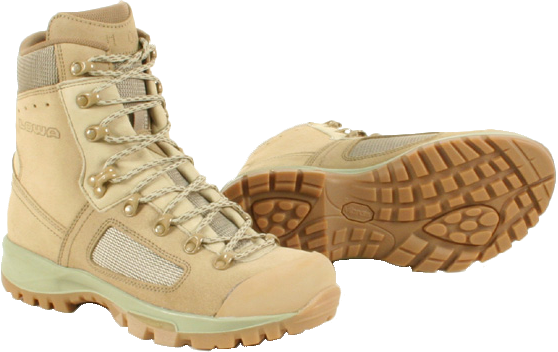
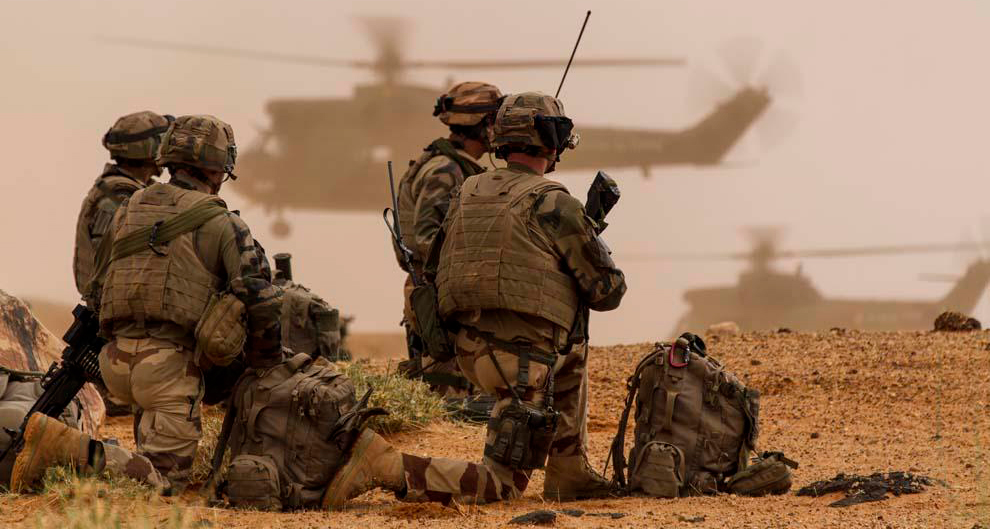
The sources of the photos:
http://airsoft-argenteuil.jdrforum.com
http://ar15.com
http://bata.com
http://baza7.com
http://camopedia.org
http://chrismilitaria.com
http://collmili95.skyrock.com
http://davidmanise.com
http://delcampe.net
http://dienbienphu.soforums.com
http://ebay.com
http://eric-collections.com
http://fr.class.posot.com
http://france-airsoft.fr
http://getitpainted.blogspot.com
http://leboncoin.fr
http://lesoiessauvages.forumgratuit.org
http://lignesdedefense.blogs.ouest-france.fr
http://marlenedietrich.org.uk
http://mathlrx.skyrock.com
http://naturabuy.fr
http://normandiehistoire44.pagesperso-orange.fr
http://oefoif.forumotion.net
http://oldmagazinearticles.com
http://passionmilitaria.com
http://picturechina.com.cn
http://quizz.biz
http://rusplt.ru
http://servir-et-defendre.com
http://trmilitary.com
http://tropasearmas.xpg.uol.com.br
http://usmc-pro.com
http://voxfnredekker.com
http://wehrmacht-awards.com
https://catherine-catty.dreamwidth.org
https://laststandonzombieisland.files.wordpress.com
https://pinterest.com
Exclusively for cartalana.com
We have much more interesting information on this site.
Click MENU to check it out!
∎ cartalana.com© 2009-2025 ∎ mailto: cartalana@cartalana.com